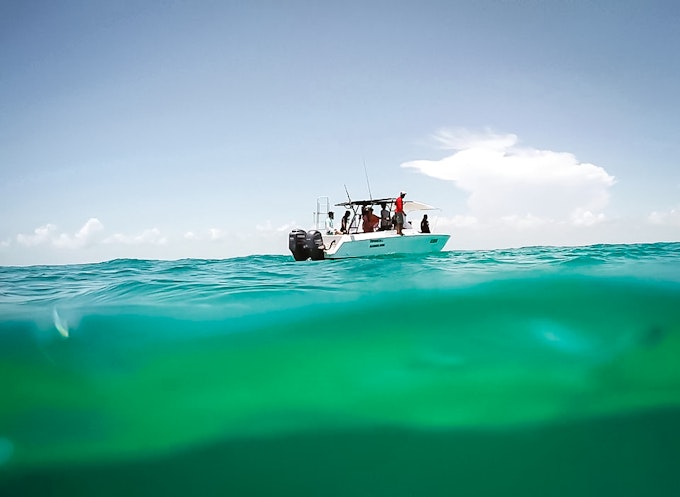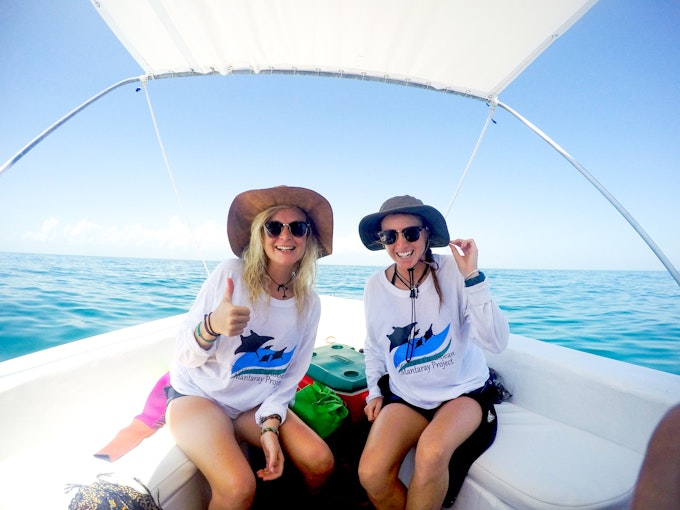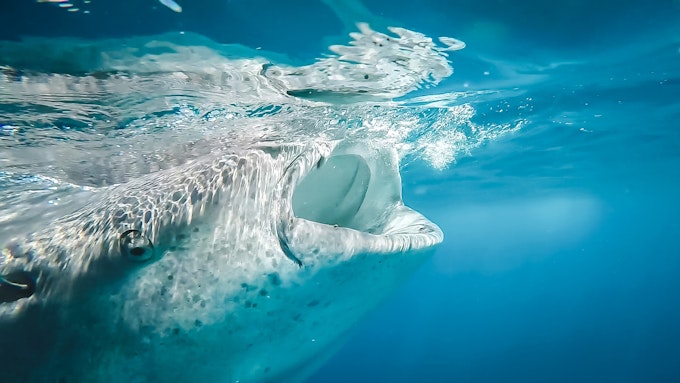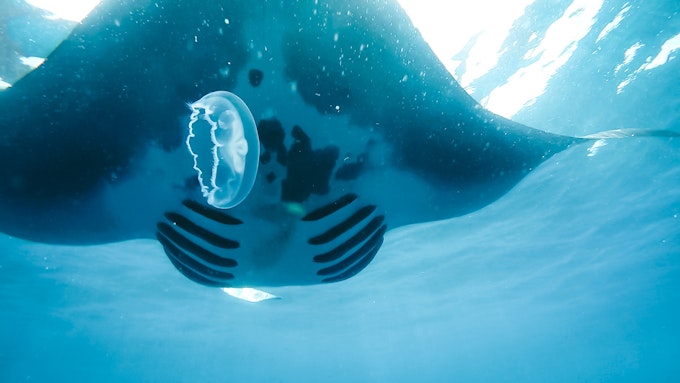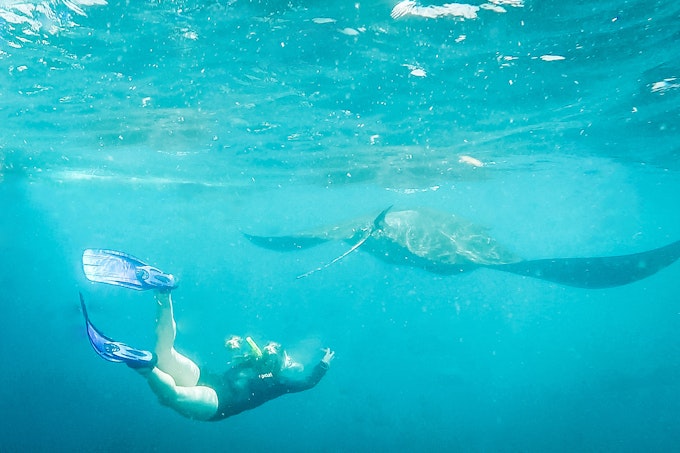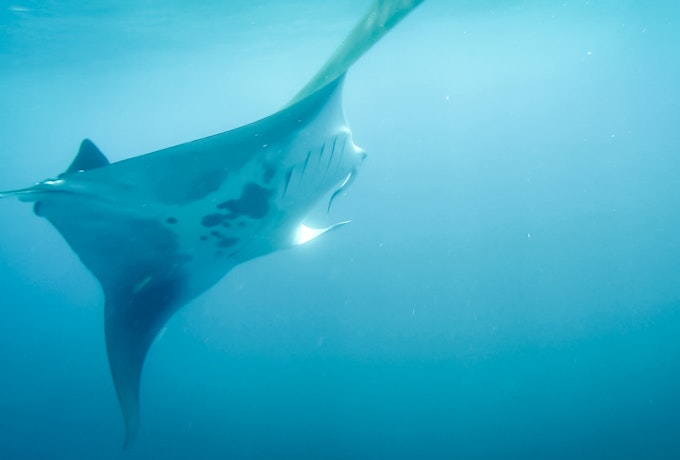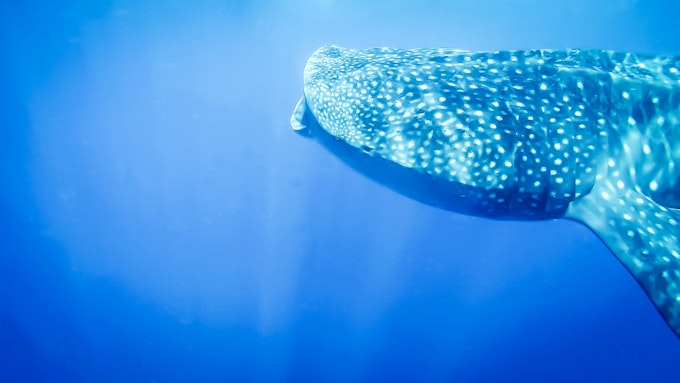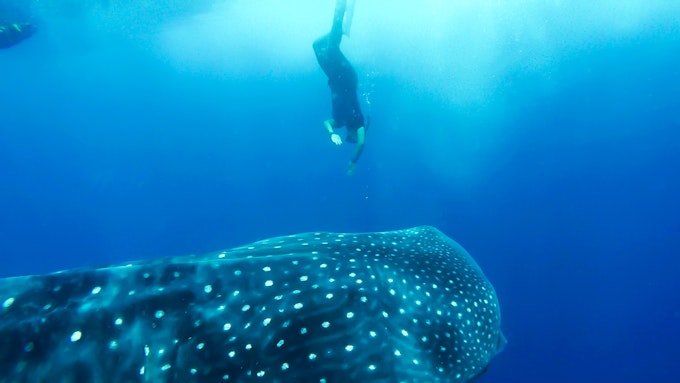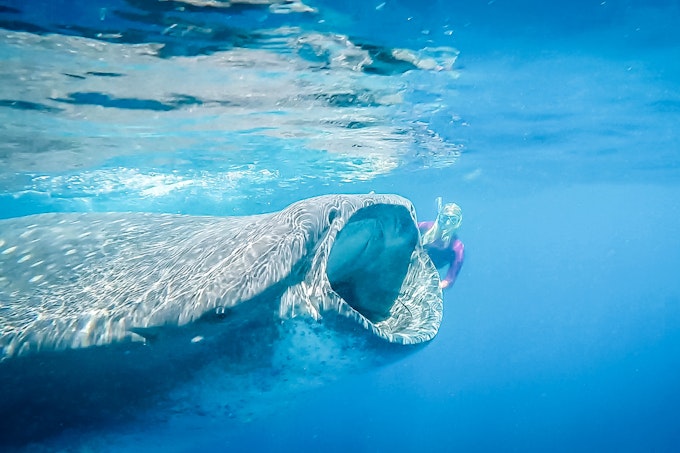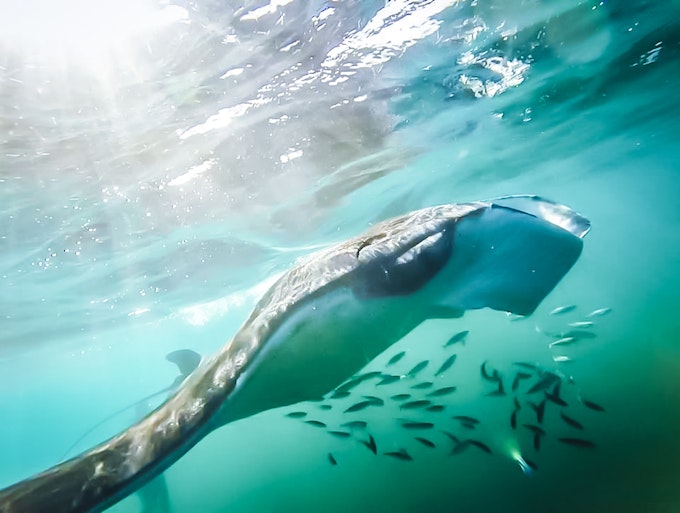Swimming with Manta Rays and Whale Sharks in the Mexican Caribbean

The morning sun sneaks a glimpse over the palm trees making the sky run pink.
The wharf is at full capacity with the fishermen preparing their boats for a day on the water. The groundskeepers are raking the white sand on the beaches in rows of perfect arches, getting ready for the hundreds of tourists that flock daily to get their own little taste of paradise.
The mornings on Isla Mujeres are sleepy in comparison to the rustling, busting and extremely hot afternoons. We sit on the jetty surrounded by our equipment and snorkeling gear as our local captain and deckhand arrive. The researchers, volunteers and team members all hobble on board our vessel, weary eyed from the early starts and the long days at sea.
We take off away from land in search of oceanic manta rays.
We are on a research expedition with the Manta Caribbean Project and Manta Trust. Heading out to sea daily in the hope of unlocking some of the many unanswered questions and secrets of the local manta ray population.
The sea surrounding Isla Mujeres is teaming with life, stemming from the nutrient rich up-welling waters. Manta rays and whale sharks migrate to the area annually between May and September to feast on the abundance of plankton. These waters offer an all-day, everyday buffet similar to those found in the hotels in the nearby tourist-district of Cancun. Except in comparison to the hotels who serve copious amounts of bacon and eggs, these filter feeding giants prefer the smaller of treats- tiny plankton.
The Research
Using our new equipment, we collect sea condition and water parameter data. In addition to this, we seize the opportunity and take the plunge into the crystal clear water with the manta rays, in order to take identification pictures.
Manta rays each have a unique pattern of shapes on their bellies that allow us to ID individuals. These ID pictures are then matched against our current data-base and will help us to determine population dynamics in this particular area. Getting these pictures sounds easier than it actually is. To get below a large fast swimming manta ray you must first be able to free-dive quickly, swim with speed and be able to hold your breath for a long time. It also helps to be able to predict their behavior and their movements.
Swimming with mantas is not like being in the water with stingrays.
They differ because their brains are much larger making them the smartest fish in the sea, even above all sharks. When swimming next to a manta, their eyes place judgment on you and you can feel them analyzing your every move. These intelligent animals are also curious ones who seem to be as inquisitive about us, as we are of them.
I was alone swimming below a large female trying to get the ID shot. But it didn’t take long for this big beauty to become curious of me and to begin to investigate my behavior. As I lay below her gazing up at her effortless moves, she stops mid-water to take a closer look. When I could hold my breath for no longer, I am forced to race to the surface to clear my snorkel and gulp for air. I puff with exhaustion but I soon realise she’s not going anywhere. I glide with her on the surface, in-sync with her wing movements, leaving me with a feeling as if time has stopped still.
Swimming with sharks
Manta rays aren’t the only marine animals that are attracted to the nutrient rich waters of Isla Mujeres. Dolphins leaped joyfully at the bow of our boat, sea turtles mated almost aggressively in the shallow depths, sea birds soared high over the water in search of food and whale sharks swam at the surface with big open mouths.
Whale sharks are the biggest fish in the sea, yet being filter-feeders they primarily eat tiny plankton and fish eggs. While swimming in the water beside these giants and gazing into their eyes, you can feel the immense power they harness in their bodies.
They are enormous animals, yet so calm and gentle. They feed at the surface by continually opening and closing their mouths which causes a current of water to swirl up the fish eggs before they gulp it down.
Unfortunately, the anthropogenic chaos that surrounds these gentle creatures isn’t totally harmless. Everyday throughout the season an abundance of boats bring in hundreds of eager tourists all excited for a unique chance to snorkel with whale sharks. It is not yet known the full extent of the consequences from the pressure of the tourism industry on the feeding behaviours and health of the sharks off Isla Mujeres. Recently they have been listed as Endangered under the IUCN threatened species list*, making it more important than ever before to ensure they are protected.
The next step
It is this natural phenomenon of nutrient rich waters that make the aggregations of whale sharks and manta rays in the Caribbean Sea so extremely unique.
This rare and special area needs to be protected to ensure these gentle giants continue to thrive and return annually.
The Caribbean mantas are also thought to be a third putative species, manta birostris sp., which is found nowhere else in the world. There is minimal understanding about the biology, ecology and distribution of this particular population. This means it is vital for us to gain a better understanding of the area and the animals to ensure the implementation of effective management strategies.
We must continue our conservation efforts so we can protect the Caribbean manta rays into the future.
Check out Manta Trust and the Caribbean Manta Project for more of their awesome work!
We want to acknowledge and thank the past, present, and future generations of all Native Nations and Indigenous Peoples whose ancestral lands we travel, explore, and play on. Always practice Leave No Trace ethics on your adventures and follow local regulations. Please explore responsibly!
Do you love the outdoors?
Yep, us too. That's why we send you the best local adventures, stories, and expert advice, right to your inbox.


